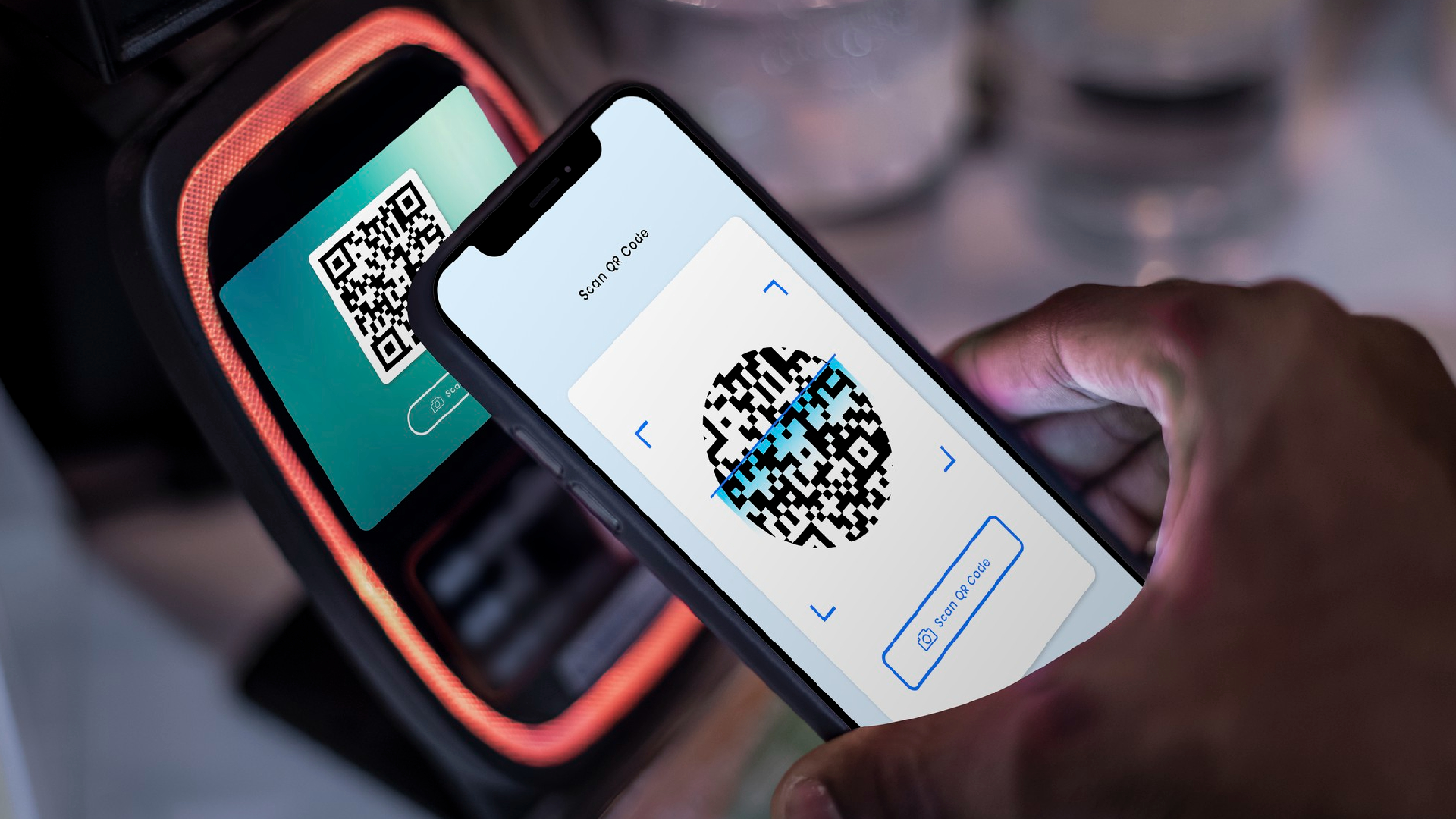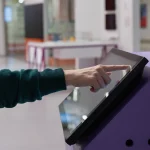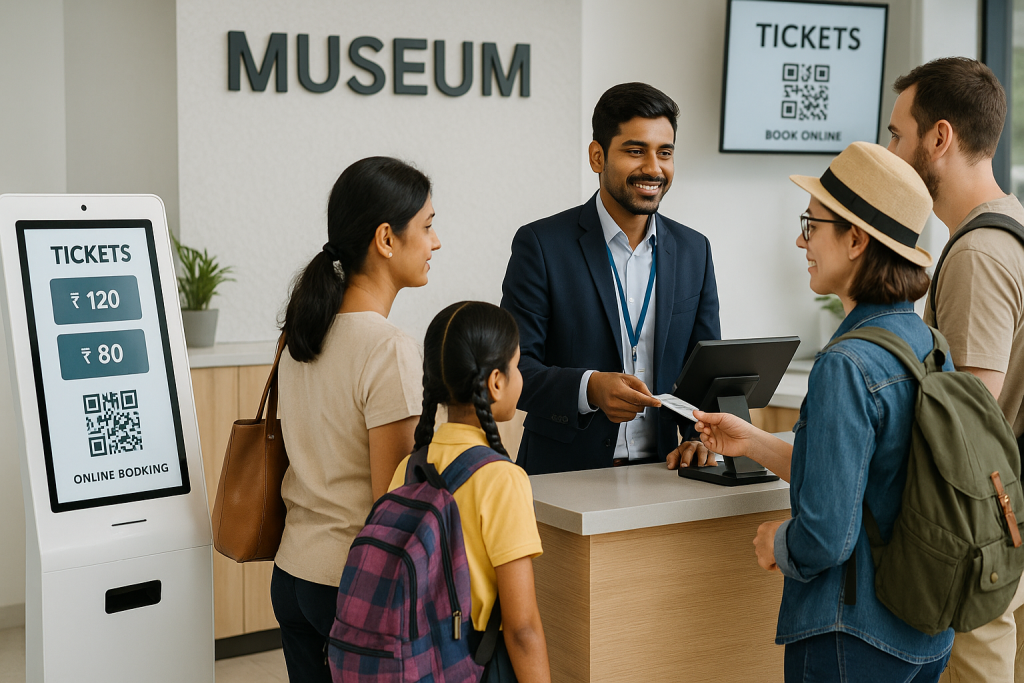Museum ticketing software is transforming how institutions operate and engage with modern visitors. As the museum experience evolves through digital transformation, organizations are adopting new technologies from online exhibits to immersive tours to enhance both audience interaction and backend efficiency. One of the most critical advancements in this journey is integrating smart, scalable ticketing systems.
Gone are the days of long queues and manual ticket processing. Museums now need fast, efficient, and reliable ticketing systems that can handle everything from online reservations to entry management and visitor analytics. That’s where integrated ticketing systems for museums come in, combining front-end convenience with powerful backend automation.
This guide is crafted specifically for system integrators, IT consultants, and museum technology teams who are responsible for upgrading or integrating ticketing solutions across platforms. Whether you’re modernizing a legacy setup or implementing a new digital framework, understanding the right approach to integration is essential.
By the end of this article, you’ll have a clear roadmap to successfully integrate museum ticketing software, improving visitor management, streamlining operations, and delivering a seamless experience across channels. We’ll explore best practices, technical considerations, and the must-have features of a truly connected museum ticketing platform.
What Is a Museum Ticketing System?
A museum ticketing system is a software solution that helps manage the end-to-end process of ticket sales, reservations, visitor check-ins, and reporting. From walk-in purchases to online bookings, these systems ensure that every transaction is smooth, traceable, and secure.
At its core, a modern museum ticketing software includes several components:
- Online ticketing portals for pre-booking
- On-site POS systems for physical counters
- Museum entry software for validating tickets at entrances
- Reporting dashboards for analyzing visitor trends and revenue
- Integration modules for connecting with CRM, payment gateways, and marketing tools
There are two major categories of ticketing solutions: standalone software and integrated ticketing systems for museums. Standalone tools operate independently, handling only a portion of the workflow, like issuing tickets or managing payments. These can become limiting over time, especially for growing museums with complex operations.
In contrast, an integrated museum ticketing platform connects all departments and functions in real-time. It ensures that sales, visitor data, inventory, and promotions are fully synchronized, offering a unified view of the entire visitor journey.
An ideal museum ticketing platform doesn’t just manage tickets. It acts as a central nervous system for everything from museum admission software to museum software integration, enabling data-driven decisions and smoother day-to-day operations.
Why Integration Matters: Benefits of Connected Ticketing Systems
For museums aiming to future-proof their operations, integrating ticketing software isn’t just a tech upgrade; it’s a strategic move.
Here’s why integration matters:
1. Real-Time Data Synchronization
With an integrated system, every ticket purchase—whether online or at the counter—updates in real time. This eliminates double bookings, prevents overselling, and ensures that staff always have access to up-to-date visitor data.
2. Centralized Ticket Management
A fragmented system leads to data silos and operational headaches. But with centralized ticket management for museums, everything from reservations to refunds is tracked in one place, making it easier to manage group visits, peak times, and capacity planning.
3. Improved Visitor Experience
Integrated systems simplify the entire ticketing process for visitors, letting them book tickets online, skip queues, and enjoy smoother entry through museum entry management software. Plus, integration with CRM tools means museums can offer personalized promotions and loyalty programs.
4. Better Revenue Tracking and Insights
An integrated museum ticket sales system helps administrators track earnings across channels, monitor high-performing exhibits, and make smarter pricing decisions. Advanced reporting tool.
Pre-Integration Checklist for System Integrators
Before jumping into the technical integration, it’s essential to assess the existing ecosystem and align on expectations. As a system integrator, your role is to ensure that the museum ticketing software fits seamlessly into the broader operational workflow.
Here’s a checklist to guide your pre-integration planning:
1. Understand the Client’s Infrastructure
Determine if the museum operates on legacy systems or a cloud-based environment. Integration approaches will differ based on infrastructure maturity, especially when syncing with museum technology solutions or ERP tools.
2. Define Clear Goals
Clarify what the museum aims to achieve—whether it’s enabling online ticketing for museums, streamlining walk-in management, or integrating ticket sales across multiple channels.
3. Evaluate Integration Compatibility
Audit existing tools like POS, CRM, membership systems, and websites. Check for API availability or third-party middleware support to ensure museum software integration is technically feasible.
4. Align Stakeholders
Collaborate with museum directors, IT teams, and front-line staff to define success criteria, review workflows, and gather all technical documentation needed before development begins.
Step-by-Step Process to Integrate Museum Ticketing Software
Once you’ve completed the planning phase, here’s a step-by-step process to integrate your selected museum ticketing platform into the client’s ecosystem.
1. Select the Right Software
Look for museum ticketing solutions that are robust, scalable, and future-proof.
A few must-haves include:
- Open APIs for smooth integration
- POS sync capabilities for real-time updates
- CRM compatibility for marketing automation
- Secure data handling and compliance features
2. Prepare the Technical Environment
Set up a sandbox environment for safe testing. Whether you’re working with cloud infrastructure or on-prem servers, ensure the system supports scalability, uptime reliability, and security protocols.
3. Connect with Existing Systems
This is where the integration gets real.
Connect the ticketing systems for museums with:
- Point-of-Sale (POS) systems
- Website booking engines
- Customer Relationship Management (CRM)
- ERP or back-office systems
This allows seamless syncing of ticket sales, visitor data, and financial reporting.
4. Configure Access Control and Entry Management
Integrate with museum entry software, access gates, QR scanners, and turnstile systems to ensure fast, secure visitor check-ins. This step greatly enhances museum visitor management and reduces friction at entry points.
5. Test and Validate
Thoroughly test every system connection:
- Data flow between platforms
- API response times
- POS and online ticket sync
- Entry system accuracy
Validate both the technical integrity and user experience before going live.
6. Deploy and Monitor
Once validated, move to full deployment.
Keep a close eye on performance metrics like:
- Ticket sales volume
- Entry speed
- Latency issues
- System stability
Post-launch monitoring ensures long-term success and provides room for optimization.
Key Features to Look for in an Integration-Ready Museum Ticketing Platform
Not all software is built with integration in mind. For museums planning digital transformation.
Here are the must-have features to look for:
1. Open APIs and Developer Docs
Ensure the system offers well-documented open APIs to connect easily with CRM, ERP, POS, and third-party services.
2. Mobile-Friendly Online Ticketing
Modern visitors expect to buy tickets on the go. Choose platforms that offer responsive booking interfaces and digital passes compatible with smartphones.
3. Real-Time Dashboards and CRM Sync
Track real-time ticket sales, visitor data, and capacity. Integration with CRM helps with post-visit engagement and targeted promotions.
4. Tailored Solutions for Museum Admins
Look for customizable modules designed to meet the unique needs of museum teams, such as custom ticket types, group bookings, and donation add-ons.
Real-World Example: Seamless Museum Ticketing Integration
To see the impact of a successful integration, consider a mid-sized art museum (name withheld for privacy) that partnered with a system integrator to upgrade its ticketing operations.
The Challenge
They were using fragmented tools: one system for walk-in sales, another for online bookings, and manual entry for memberships.
The Solution
The integrator implemented a scalable museum ticketing software with real-time sync across POS, website, and mobile apps.
It was configured to:
- Offer mobile-friendly ticketing
- Integrate with their CRM and marketing tools
- Automate visitor reporting and capacity planning
The Results
- 28% increase in online ticket sales within 3 months
- Improved visitor entry times by 40%
- Staff saved over 15 hours/week in manual reconciliation
- Centralized reporting allowed for better exhibit planning
This success story highlights how collaboration between museums and tech partners leads to measurable ROI, improved workflows, and happier visitors.
Why Choose EveryTicket for Seamless Museum Software Integration
EveryTicket is built with integration at its core. Whether you’re a system integrator, museum IT lead, or a digital transformation consultant, our museum ticketing software is designed to connect effortlessly with your tech stack, delivering both flexibility and performance.
Built for System Integrators
Our platform supports full-stack connectivity—CRM, ERP, POS, and third-party tools—making it ideal for system integrators who manage complex infrastructure for museums. With robust APIs, clear documentation, and dedicated solution engineers, integrations are faster and more reliable.
Support for Enterprise Teams
We offer dedicated onboarding, sandbox environments for testing, and enterprise-grade support SLAs. Whether it’s museum entry management software or back-office CRM sync, EveryTicket ensures stability at scale.
Key Features at a Glance
- Seamless museum admission software and entry control integration
- Mobile-ready online ticketing for museums
- Real-time visitor analytics and ticket sales tracking
- Centralized ticket management for museums
- Scalable, secure, and GDPR-compliant
Ready to Partner?
Let’s build smarter museums together.
Conclusion
Seamless integration of museum ticketing software is no longer a luxury—it’s essential for modern, visitor-first operations. From real-time data sync to improved ticketing workflows and reporting, integrated platforms empower museums to deliver top-tier experiences.
System integrators and IT partners play a critical role in this journey. With the right tools, like EveryTicket, you can ensure smooth rollouts, fewer technical headaches, and long-term value for your clients.
Ready to help museums evolve their ticketing? Choose a solution designed for the future.



